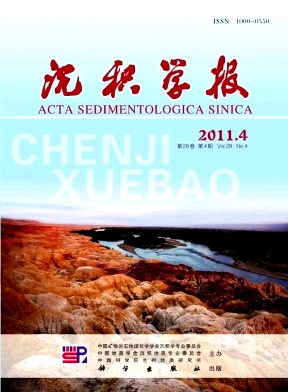Comparison of Sequence Stratigraphic Significance between East Coulee Delta and Jijihu Modern Subaqueous Aggradational Fan
- Received Date: 1900-01-01
- Rev Recd Date: 1900-01-01
- Publish Date: 2011-08-10
-
Key words:
- Jijihu modern subaqeous aggradational fan (SAF) /
- East Coulee Delta /
- sequence stratigraphy /
- falling stage systems tract (FSST) /
- avoidance of highstand systems tract
Abstract: Jijihu modern subaqueous aggradational fan (SAF) in Jungar Basin, Xinjiang Province, China, is 24m arch length and 10m radii. Jijihu SAF consists of alluvial fan 1, unit A (SAF), unit B (slop beds, retrogradational beds and flooding mudsand beds), unit C (alluvial fan 2) and unit D (alluvial fan 3) , which have been documented by Li by observing and digging during one week in the condition of 40 degree centigrade Junggar Basin after desert flood in 2007 summery time.
Field observation directs as followings: (1) Exception of alluvial fan 1, Jijihu SAF has the similar stacking patterns with East Coulee Delta (Posamentier et al., 1992). Especially, there is a 1cm red mud bed between alluvial fan 1 and SAF, directing that they belong to continuous sedimentation documented by digging. Although SAF covers alluvial fan 1 in the Northern side of pool, another isochronous unit opposite Jijihu SAF about 10m away in the Southern side directs the lowest alluvial fan clearly. Thereby, alluvial fan 1 becomes the lowest unit that may be interpreted as falling stage systems tract (FSST) during forced regression associated with incision, showing that pond water reaches lowest level. (2) Subsequently, pond level begins to rise, sediments supply exceeds the rate of level rise, and SAF (unit A) develops during normal regression, so that SAF may be interpreted as lowstand systems tract (LST) according to present scenario of sequence stratigraphy. (3) Associated with level rise exceeds sediments supply, unit B develops as follows: Firstly, fine mudsands begin to accumulate in front of SAF forming slope beds (i.e., healing phase wedge of Posamentiaer and Allen (1993)). Secondly, coarse sediments such as gravels deposits on the top of SAF, directing retrogression stacking patterns landward. Finely, level reaches to maximum, flooding mudsand beds begin to precipitate under hot wind in the Junggar Desert. Therefore, three parts (unit B) above may record as transgressive systems tract (TST) during transgression. (4) The second desert flood forms alluvial fan 2 (unit C) and 3 (unit D) incising one by one, they may be interpreted as falling stage systems tract (FSST) of another sequence during forced regression.
This article has compared the sequence stratigraphic significance between East Coulee Delta in Alberta and Jijihu subaqueous aggradational fan (SAF), and concluded as follows: (1) East Coulee Delta develops LSTTST superposition and FSST superposition that belong to two different depositional sequences; (2) Jijihu SAF develops FSSTLSTTST superposition and FSST superpositions that are attributed to two depositional sequences, too; (3) two outcrops has proved that no highstand systems tract develops after maximum flooding surface in modern smallscale pond, it is possible to represent difference between marine and nonmarine settings due to transporting energy in nonmarine setting not enough to carry sediments into pond. This paper has also discussed some key problems such as sequence boundary that is redefined as remnant maximum flooding surface (RMFS) and its correlative subaerial unconformity (CSU). Furthermore, this paper suggests avoidance of highstand normal regression term. In subsequent thesis authors will suggest that stillstand normal regression replace highstand normal regression.
| Citation: | LI Shao-hu. Comparison of Sequence Stratigraphic Significance between East Coulee Delta and Jijihu Modern Subaqueous Aggradational Fan[J]. Acta Sedimentologica Sinica, 2011, 29(4): 613-621. |






 DownLoad:
DownLoad: